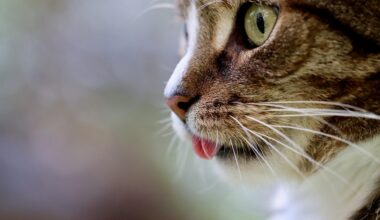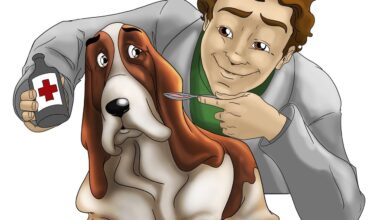Fluid Therapy Basics for Cats in Shock: What Owners Should Know
When a cat experiences shock, immediate action is essential. Shock can be caused by severe dehydration, blood loss, or trauma, and it greatly impairs the body’s ability to function effectively. In such situations, fluid therapy becomes critical. It helps restore circulation, maintain blood pressure, and ensure that vital organs receive the oxygen they need to survive. One must understand that not all fluids are the same, and the type administered may vary based on the underlying cause of the shock. Owners should not attempt to give fluids without veterinary guidance, as improper administration can lead to further complications. Always consult your vet to determine the exact cause and appropriate fluid therapy required for your feline friend. Fluid therapy can be administered through different routes, including intravenous (IV) or subcutaneous (under the skin). IV fluids are typically preferred in acute situations, allowing for quick replenishment of essential nutrients and hydration. Monitoring your cat’s response to treatment is just as important as the administration itself. Always keep a close eye on their behavior and physical condition.
Understanding the signs of shock in cats is crucial. Common symptoms include heavy panting, rapid heart rate, weak pulses, lethargy, and pale gums. If you observe any of these signs, it’s imperative to act quickly. First, try to assess the situation calmly without panicking. Minimize stress for your cat by keeping them in a quiet, cool place. Assess the environment and determine if a recent injury, heat exposure, or severe anxiety could be contributing factors. Providing accurate information about the situation can assist your veterinarian in forming a diagnosis and treatment plan. Remember, transporting your cat swiftly to the vet while keeping them as comfortable as possible should be your priority. Additionally, having an emergency first aid kit prepared with necessary items can be beneficial in shock situations. This kit can include gauze, a muzzle to prevent biting during panic, and hydration options. Don’t forget to have your vet’s contact details and emergency procedure number at hand. Knowing when to contact your vet is often more crucial than what you actually do until you get there. Be proactive, and ensure your cat receives prompt care.
Types of Fluids Used in Therapy
There are several types of fluids that can be administered during cat shock situations. Each type serves a different purpose based on the underlying cause of the shock. For instance, isotonic fluids, such as veterinary-grade normal saline, are commonly used to treat dehydration. They help replenish lost electrolytes and restore fluid balance. Your veterinarian may also use colloids, which are often indicated in cases involving low blood protein levels. Colloids help expand blood volume and improve circulation. In certain situations, hypertonic saline might be administered for rapid volume expansion in seriously ill cats. However, it’s essential to understand that hypertonic solutions must always be followed by isotonic fluids to prevent complications. Monitoring is critical during fluid administration to ensure the cat’s condition is improving and not deteriorating. Your vet may recommend specific tests to assess hydration levels and blood chemistry. Keeping your cat calm and comfortable during this time can contribute to a more successful recovery. The road to recovery may also include dietary changes and potentially ongoing fluid therapy to maintain health post-shock.
Fluid therapy requires careful monitoring to evaluate its effectiveness. Veterinarians may use various methods to review progress, such as blood tests, pulse measurements, and hydration assessments. Once the therapy has started, watching for improvements in your cat’s vital signs is essential. These improvements may include a stronger pulse, normalized heart rate, and better hydration status indicated by improved gum color. Additionally, behavioral changes can signal recovery; for example, a cat regaining interest in food or moving around more can indicate progress. However, keep an eye out for any adverse reactions to the fluid therapy. Some cats may not tolerate certain fluid types well, leading to complications like fluid overload. Close collaboration with your veterinary team can help address any issues efficiently. Cats are resilient creatures, and with the right care, they can bounce back even from serious shocks. Owners should remain engaged throughout this recovery process and continue to monitor their pet closely. Educating yourself about fluid therapy will make you a more effective advocate for your cat’s healthcare needs.
Home Care After Fluid Therapy
Post-treatment care is equally important. Once your cat receives fluid therapy, you may need to implement a suitable home care routine to ensure they fully recover. Start by providing a quiet, warm, and comfortable area where your pet can rest without disturbances. Hydration remains paramount; ensure they have access to fresh, clean water at all times. In addition to hydration, a nutritious diet tailored to your cat’s specific needs is necessary. Your veterinarian may recommend a special diet to support recovery and replenish lost nutrients. Keep an eye on their eating habits and behavior; a lack of interest in food or sudden lethargy should prompt further consultation with your vet. Regular follow-ups can be beneficial to monitor their recovery process. Your vet might suggest rechecking blood values or signs of hydration. Adhering to therapeutic recommendations will greatly contribute to your cat’s overall well-being. Remember, a positive mental attitude and emotional support can significantly impact recovery as well; maintain a loving and engaging environment for your feline friend.
Understanding the potential challenges associated with fluid therapy is important. While many cats respond positively to treatment, some may experience delayed recovery or complications. For instance, if a cat is already suffering from health issues, such as kidney disease, the response to fluid therapy may not be as favorable. There may also be fluid retention problems leading to swelling and other complications. Regular vet check-ups during the recovery period can help identify problems early. If your cat displays any unusual behavior, do not hesitate to reach out to your vet. You should also be aware that administering fluids at home without proper training can lead to serious complications. Ensure you have clear instructions from your veterinarian if fluid therapy is required at home. Many owners find it beneficial to take notes during veterinary visits, detailing each step of the fluid therapy process and what to look for during recovery. Having these records aids in better communication with your veterinary team. Being proactive, responsive, and observant helps create a smoother recovery journey for your cat.
Conclusion: The Role of Owners
As a cat owner, your role is crucial during shock situations. Understanding the importance of prompt veterinary care and timely communication can save your pet’s life. Participating in your cat’s recovery process gives you an invaluable understanding of what your pet needs during this critical time. Continuous advocacy for their health allows them to receive the best possible care. Remain educated about cat health and familiarize yourself with signs of distress. The ability to respond quickly and appropriately to emergencies will greatly enhance your confidence as an owner. In stressful situations, keeping a calm demeanor can positively impact your pet’s anxiety levels. Learning basic first aid for cats can also be beneficial, providing you with skills essential for critical situations. Equip yourself with knowledge about fluid therapy and other treatments that may arise in emergencies. Continuous education and awareness are advantageous, ensuring your cat lives a longer, happier, and healthier life. Remember, your cat relies on you for love, understanding, and care, making you their primary guardian in both health and well-being.


